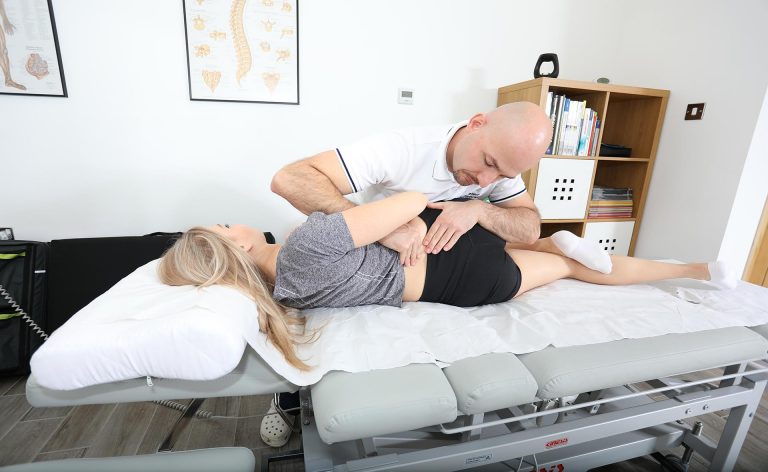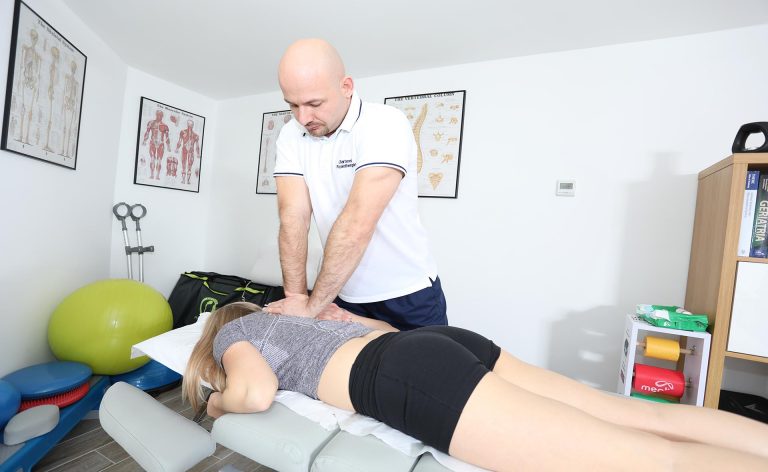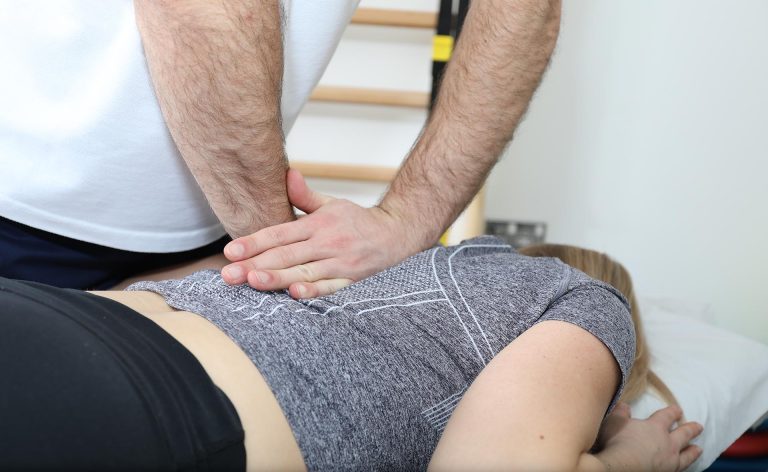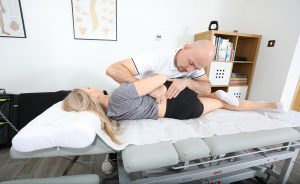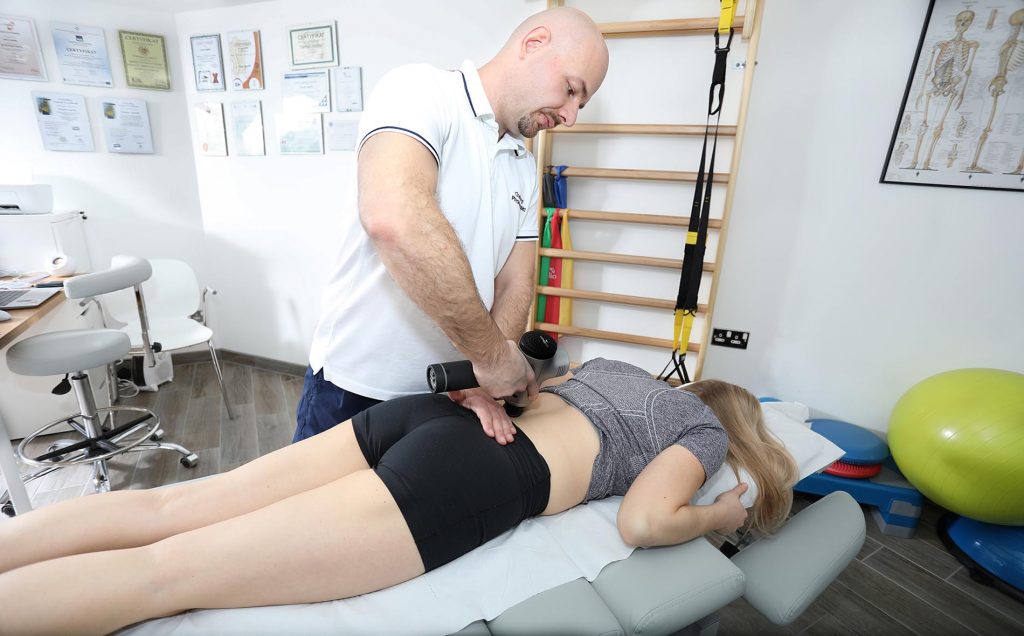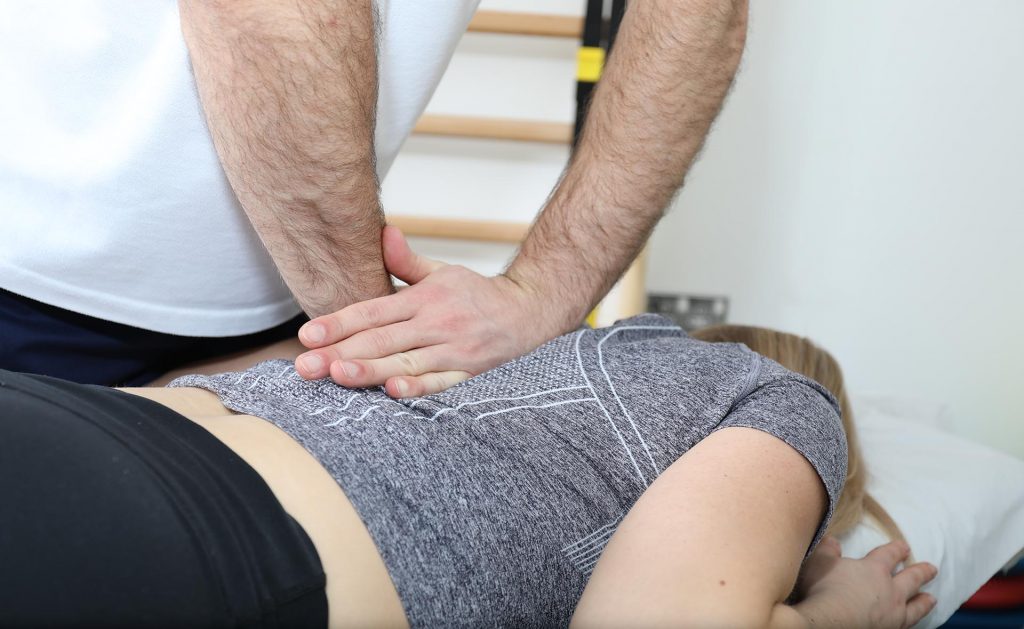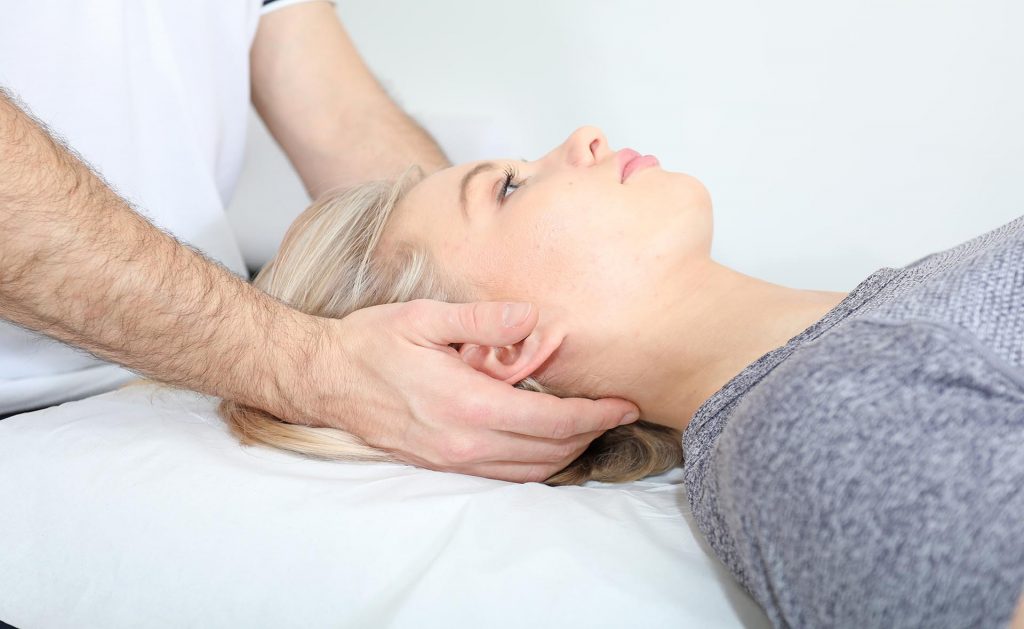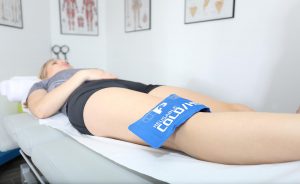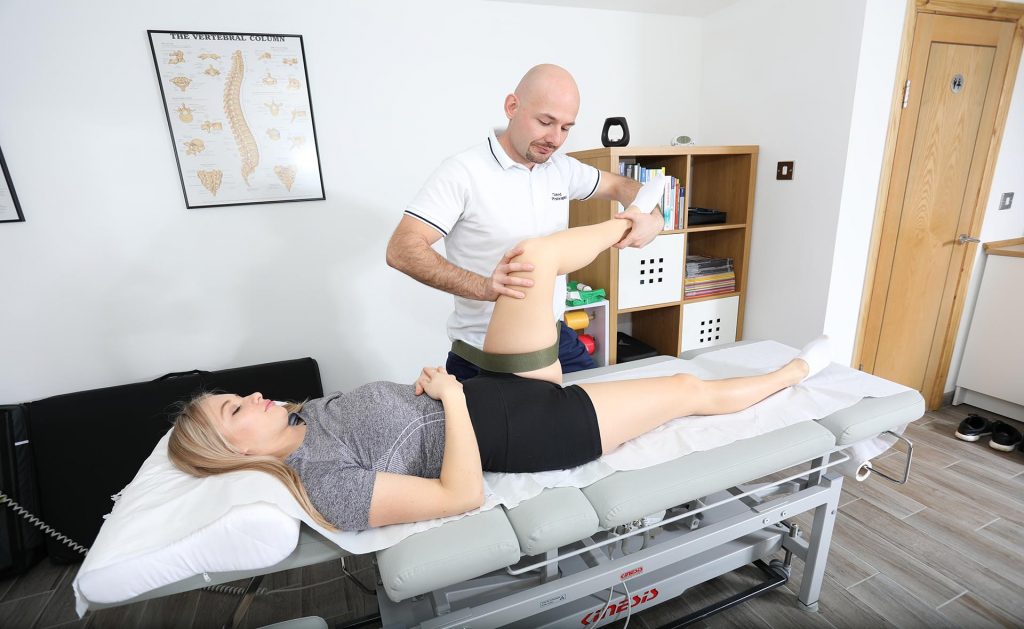Joint adjustment physiotherapy Southampton
Joint adjustment, also known as joint manipulation physiotherapy, is a specialised manual therapy technique designed to restore mobility, reduce stiffness, and relieve pain. If you are looking for physiotherapy in Southampton to address joint dysfunction, pain, or stiffness, our experienced therapists at Physiocraft can help diagnose the root cause and create a safe, personalised treatment plan.
Joint Adjustment Therapy in Southampton
Joint manipulation therapy has been used for centuries, dating back to 400 BC. Today, it is an advanced technique applied by physiotherapists, osteopaths, and chiropractors to restore proper function in stiff or painful joints. It is particularly useful for patients seeking joint pain treatment near me when other conservative methods have not been effective.
Manual therapy for joint dysfunction may include well-established methods such as Ackermann, Cyriax, or Mulligan techniques. Before any spinal mobilization techniques or manipulations are performed, a thorough assessment is essential. This includes examining:
- Active and passive range of motion
- Muscle strength and flexibility
- Patient’s sensation and reflexes
- Articular sliding and joint mechanics
- Identifying the safest and pain-free direction of movement
The distinctive “click” or “pop” often heard during high-velocity low-amplitude thrust (HVLA) manipulations is completely normal. It results from gas bubbles within the joint fluid being released and does not determine the success of the treatment.
Joint adjustment physiotherapy is especially effective for conditions such as lumbago (sudden lower back pain caused by spinal joint blockage), where mobility is severely restricted. Many patients notice up to 90–100% improvement in movement and pain relief immediately after treatment.
To maintain results, our physiotherapists also prescribe tailored self-mobilisation exercises and back pain treatment exercises that help accelerate recovery and prevent future stiffness.
Book your appointment
Joint Manipulation and Scientific Research
Research consistently supports the effectiveness of joint manipulation physiotherapy in reducing pain and improving mobility:
- Hussien et al. (2017): Adding Mulligan therapy to a chronic lower back pain rehabilitation programme improved pain relief and function.
- Bronfort et al. (2001): Found that spinal manipulation combined with strengthening exercises provided the most effective outcomes.
- Doner et al. (2012): Showed that Mulligan therapy and stretching significantly improved stiffness, range of motion, and pain compared to exercise alone.
These findings highlight how spinal mobilisation techniques and manual therapy can offer fast and long-lasting relief when integrated with physiotherapy-led rehabilitation.
How Joint Manipulation Works
Joint manipulation techniques are carefully controlled and do not push the joint beyond its natural range of motion. When applied by a qualified physiotherapist, they are safe and effective in:
- Reducing joint stiffness
- Stretching tight joint capsules
- Improving collagen fibre mobility
- Relieving muscle tension in surrounding tissues
The immediate benefits often include improved mobility, reduced pain, and less muscle spasm. This is why soft tissue release physiotherapy is frequently combined with manipulations for optimal results. Together, they improve blood flow, reduce trigger points, and support faster recovery.
By reducing abnormal pressure on spinal and peripheral joints, physiotherapy helps restore balance to the musculoskeletal system, preventing chronic pain and promoting long-term health.
Contraindications for Joint Manipulation
Although highly effective, joint manipulation physiotherapy is not suitable for everyone. A detailed assessment ensures patient safety and rules out absolute contraindications such as:
- Skeletal tumours
- Unstable fractures
- Spinal cord or severe nerve injuries
- Bone marrow inflammation
- Chronic pain unrelated to mechanical dysfunction
Relative contraindications may also apply in cases where tissues are weakened or damaged. In such situations, alternative physiotherapy Southampton treatments such as mobilisations, exercises, or electrotherapy are considered.
Book your appointment
How Physiotherapy Helps Joint Stiffness
If you are experiencing joint stiffness, restricted mobility, or acute pain, joint manipulation physiotherapy can be an effective solution. By combining:
- Manual therapy for joint dysfunction
- Spinal mobilisation techniques
- Soft tissue release physiotherapy
- High-velocity low-amplitude thrust methods
…our Southampton physiotherapists help restore movement, reduce pain, and speed up recovery.
Whether you are searching for “joint pain treatment near me” or looking for a trusted clinic for physiotherapy in Southampton, Physiocraft provides expert, safe, and evidence-based care.
